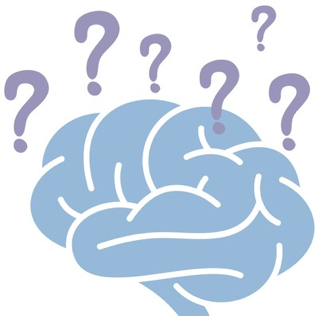Visual Processing Assessment
Sight refers to what you see.
Vision refers to how you are able to use and manipulate what you see.
Vision perception refers to how you use your sight and vision skills to interpret your surroundings.
Each of these three key pillars of our visual symptom are incredibly important in equipping your child with the best tools to learn and thrive.
In a well-functioning visual system, ‘20/20 vision’ certainly isn’t everything. A child with perfect sight may have poor vision or poor vision perception, leading to trouble concentrating or even to thrive in the classroom environment. Considering 80% of what we learn is through our vision, very often in our clinic we see a number of children struggling with their school work - not due to a lack of intelligence, but simply because they are struggling to interpret what they are reading on the page or the board. Sometimes these children can be perceived as having learning delays when really they do not have the necessary processing skills to read and perform written language tasks.
Our visual perception assessments consider your child’s sight and vision, tracking eye movement and function, but also go a step further to identify how well this information is being used, processed and stored.
Your child may have visual processing delays if they:
Are strong at maths, but struggle with English and written tasks
Loss their place on the page whilst reading
Are slow to learn new words or phrases
Can sound out words but struggle to recognise them when they appear again
Copy inaccurately
Reverse their numbers and letters and
Struggle with their writing skills including lack of spacing, poor sized writing
If you are interested in a vision perception assessment, we do require an initial eye examination with one of our optometrists to first assess your child’s sight and vision. You are welcome to discuss you concerns and interest in a visual perception assessment, and our optometrist will discuss this with you accordingly.
RightEye Assessment
RightEye uses advanced eye-tracking technology to detect and analyse binocular and functional vision issues.
The RightEye assessment measure tracking, dynamic vision, reading, and/or eye muscle control. After the assessment is completed with our vision therapist, a follow up appointment with your optometrist will be scheduled to discuss the findings. A detailed report with visual representations of the assessment components is also provided.
dyslexia is defined as ‘a dysfunction in reading’ - which can result in struggle in a child’s schoolwork activities.
At Kiddies, we understand the association between reading and vision, so it is always imperative to ensure that a child’s struggle is not an undiagnosed visual issue that resembles dyslexia. In this case, very frequently their reading difficulties are easily corrected by the use of visual aids, such as glasses or contact lenses, as their visual skills were the original cause of their problem. For this reason, a comprehensive eye examination is essential for any child who is suspected to have dyslexia or any other perceived learning difficulty.
DDT Dyslexia Assessment
After a comprehensive eye examination ruling out vision-related learning difficulties, Kiddies also offers the option of the DDT Dyslexia Assessment. As Behavioural Optometrists, whilst we cannot diagnose your child with dyslexia (this is something a psychologist will be able to do), we are able to use this assessment to advise you on how your child best learns and some recommendations on how to manage their visual difficulties, as well as any optical solutions which may improve your child’s eye tracking, teaming, focus and coordination - and may consequently assist in their learning.
This test involves written, reading and verbal components and will assist in determining the three fundamental types of dyslexia and its seven permutation patterns.
The test is in three parts; the first one involves checking for written reversals of numbers and letters. The second part tests the mode of decoding words: eidetic or phonetic. The third and last part consists of assessing whether encoding is eidetic or phonetic.
-
Dysnemkinesia (motor)
This represents a deficit in remembering how to perform the movements required for writing.
For example:
The student will make reversals such as writing ‘b’ instead of ‘d’.
-
Dysphonesia (auditory)
This represents a deficit in the ability to sound off, syllabicate, pronounce and distinguish sounds of any unfamiliar words.
For example:
The student reads ‘house’ instead of ‘home’.
The student writes ‘aminal’ instead of ‘animal’.
-
Dyseidesia (visual)
This represents a deficit in the ability to recognise whole words by sight and match them to whole-word sounds.
For example:
The student reads ‘ball’ instead of ‘bell’.
The student writes ‘enuf’ instead of ‘enough’.




